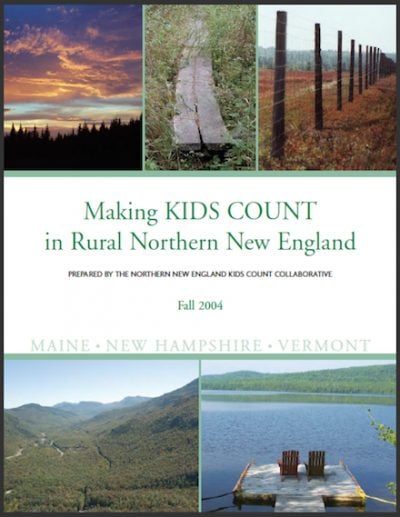Summary
This report pairs focus group feedback and interview answers with quantitative data to tell the story of family economic success in rural Northern New England. It offers recommendations — and a spark for ongoing discussions — aimed at helping families in these rural areas thrive.
The Annie E. Casey Foundation funded this project — and several other multi-state projects — as part of a larger effort to explore child-well being in rural America. The resulting reports aim to provide useful data to policymakers and encourage smart investments that will strengthen the well-being of rural families.







